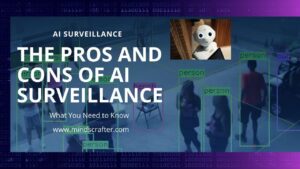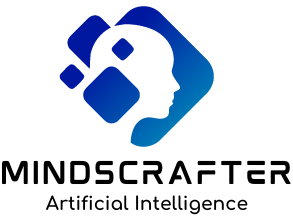AI Surveillance:
Artificial intelligence (AI) surveillance is a rapidly growing technology that is being used in various industries, from security to marketing. While it has its benefits, such as improved safety and efficiency, there are also concerns about privacy and potential misuse. This article will explore the pros and cons of AI surveillance.

The Pros and Cons of AI Surveillance
Increased Security and Safety:
AI surveillance increases security and safety, providing one of the main benefits. With the use of AI-powered cameras and sensors, it is possible to monitor large areas and detect potential threats in real time. This can be particularly useful in high-risk areas such as airports, train stations, and public events. AI surveillance can also help to prevent crime by identifying suspicious behaviors’ and alerting authorities before an incident occurs. Additionally, AI surveillance improves workplace safety by identifying potential hazards and alerting employees to take necessary precautions.
Privacy Concerns and Potential Misuse:
AI surveillance can provide increased security and safety, it raises concerns about privacy and potential misuse. The collection and unauthorized use of personal information pose a risk when AI surveillance monitors and analyzes vast amounts of data without consent. Furthermore, if the technology is not properly calibrated or used to target specific groups, AI surveillance can exhibit bias and discrimination. It is crucial to consider these potential drawbacks and implement safeguards to ensure ethical and responsible use of AI surveillance.
Efficiency and Cost Savings:
One of the main benefits of AI surveillance is its efficiency and cost savings. With the ability to monitor and analyze vast amounts of data in real time, AI surveillance can quickly identify potential threats and alert security personnel. This can help prevent crimes and reduce response times in emergency situations. Additionally, AI surveillance can be more cost-effective than traditional security measures, such as hiring additional security personnel or installing physical barriers. However, it is essential to weigh these benefits against the potential drawbacks and ensure that the use of AI surveillance is ethical and responsible.
Potential for Bias and Discrimination:
One of the significant drawbacks of AI surveillance is the potential for bias and discrimination. This can lead to unfair treatment of particular groups of people, such as racial or ethnic minorities. Additionally, AI surveillance can target specific groups of people, such as political dissidents or activists, which can violate their human rights. It is essential to carefully consider the potential for bias and discrimination when implementing AI surveillance systems and take steps to mitigate these risks.
Ethical Considerations and the Need for Regulation:
As AI surveillance becomes more prevalent, there is a growing need for ethical considerations and regulation. Without proper oversight, AI surveillance systems can be used to violate privacy rights and discriminate against certain groups of people. Governments and organizations must establish clear guidelines and regulations for the use of AI surveillance. This includes ensuring transparency regarding the collection and use of data and preventing the technology from targeting specific groups of people. Additionally, there should be mechanisms in place to address any potential biases or discrimination that may arise from the use of AI surveillance.

Shabbir